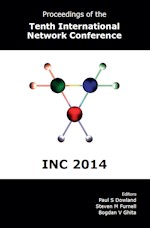In 2014, we launched our open-access repository which offers full text access to conference proceedings from many of our events including the INC and HAISA series. These papers are free to access and distribute (subject to citing the source).
» Openaccess proceedings » Tenth International Network Conference (INC 2014)
 | Tenth International Network Conference (INC 2014) |
Title: A Privacy-Aware Model for Communications Management in the IP Multimedia Subsystem
Author(s): Jacques Ophoff, Reinhardt Botha
Reference: pp117-126
Keywords: IP Multimedia Subsystem, Communications management, Privacy
Abstract: Never before have people been so connected to one another. Today we have the ability to communicate with almost anyone, anytime, anywhere. Our increased connectivity and reachability also leads to new issues and challenges that we need to deal with. When we phone someone we expect an instant connection, and when this does not occur it can be frustrating. On the other hand it is equally disruptive to receive a call when one is busy with an important task or in a situation where communication is inappropriate. Social protocol dictates that we try to minimize such situations for the benefit of others nearby and for ourselves.
This management of communications is a constant and difficult task. Using presence – which signals a person’s availability and willingness to communicate – is a solution to this problem. Such information can benefit communication partners by increasing the likelihood of a successful connection and decreasing disruptions. This paper addresses the problem of staying connected while keeping control over mobile communications.
The paper presents a model for privacy-aware communications management, extended to the IP Multimedia Subsystem (IMS). The model stresses the privacy of potentially sensitive presence information. A unique perspective based on social relationship theories is adopted. The use of relationship groups not only makes logical sense but also assists in the management of presence information and extends existing standards. Thus the model presents a solid foundation for the development of future services. In these ways the proposed model contributes positively towards balancing efficient mobile communications with the need for privacy-awareness.
Download count: 1826
How to get this paper:


PDF copy of this paper is free to download. You may distribute this copy providing you cite this page as the source.
